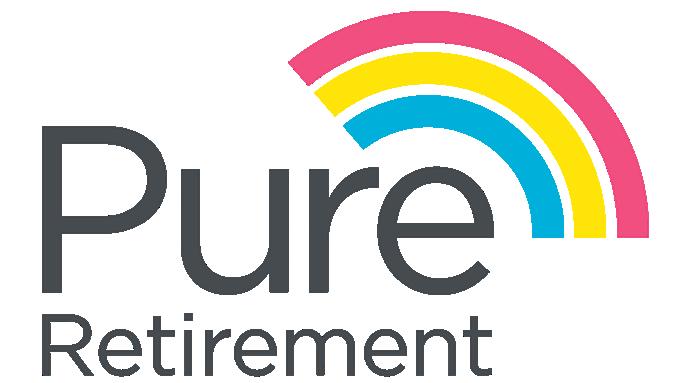
6 minute read
A SECURE FUTURE
A SECURE FUTURE WITH EQUITY RELEASE?

Advertisement
THESE days we have to look at a variety of ways to raise cash and ensure that our future will be secure and one popular way for anyone over 55 to do just that is via equity release, which offers the chance to access the cash – the equity – tied up in your home. It can be as a lump sum or in several small amounts, or a combination of both.
There are two equity release options: lifetime mortgage and home reversion.
The Money Advice Service explains that a LIFETIME MORTGAGE means that you take out a mortgage secured on your property, provided it is your main residence, while retaining ownership.
You can choose to ring-fence some of the value of your property as an inheritance for your family or you can choose to make repayments or let the interest roll-up. The loan amount and any accrued interest is paid back when you die or when you move into long-term care. Most people who take out equity release use a lifetime mortgage. Usually you don’t have to make any repayments while you’re alive and interest “rolls up” (unpaid interest is added to the loan), meaning the debt can increase quite quickly over a period of time. However, some lifetime mortgages do now offer the option to pay all or some of the interest. Some will let you pay off the interest and the capital.
In the same way ordinary mortgages vary from lender to lender, so do lifetime mortgages, and if you’re looking at this option it’s worth knowing that the minimum age for this is usually 55. As we’re now all living longer, the earlier you start the more this is likely to cost in the long run.
The average borrower in their late 60s can usually borrow around 35% of the value of their home, but how much can be released is dependent on your age and the value of your property. The percentage typically increases according to your age when you take out the lifetime mortgage, while some providers might offer larger sums to those with certain past or present medical conditions. Many lenders offer interest rates which are fixed or, if they are variable, have a “cap” or upper limit which is fixed for the loan’s duration.
Check whether the product has a “no negative equity guarantee” This means that, when your property is sold and agents’ and solicitors’ fees have been paid, even if the amount left is not enough to repay the outstanding loan to your provider neither you nor your estate will be liable to pay any more.
Consider whether you can pay none, some or all of the interest. If you can make repayments, the mortgage will be less costly. However, with a lifetime mortgage where you can make monthly payments, the amount you can repay might be based on your income. Providers will have to check you can afford these regular payments.
Look at whether you can withdraw the equity you’re releasing in small amounts, as and when you need it, or whether you have to take it as one lump sum. The advantage of being able to take money out in smaller amounts is you only pay the interest on the amount you’ve withdrawn. If you can take smaller lump sums, check if there is a minimum amount.
It’s also worth finding out if you have the right to move to another property, subject to the new property being acceptable to your product provider as continuing security for your equity release loan, as different lifetime mortgage providers might have slightly different thresholds.
A HOME REVERSION involves you selling part or all of your home to a home reversion provider in return for a lump sum or regular payments. You have the right to continue living in the property until you die, rent-free, but you have to agree to maintain and insure it.
You can ring-fence a percentage of your property for later use, possibly for inheritance - the percentage you retain will always remain the same, regardless of the change in property values, unless you decide to take further cash releases. At the end of the plan, your property is sold and the sale proceeds are shared according to the remaining proportions of ownership. You will get a lump sum or regular payments – normally between 20 per cent and 60 per cent of the market value of your home, or the part you sell.
With home reversions, it’s worth checking whether or not you can release equity in several payments or in one lump sum and the minimum age at which you can take out a home reversion plan. Some providers insist you’re at least 60 or 65 before you can apply.
Keep in mind the percentage of the market value you will receive. This will increase the older you are when you take out the plan but might vary from provider to provider. Also check whether you have the right to remain in your property for life or until you need to move to long-term care, provided the property remains your main residence
and you abide by the terms and conditions of your contract.
Again, check whether you have the right to move to another property, subject to the new property being acceptable to your product provider as continuing security for your equity release loan and whether the product has a “no negative equity guarantee”. You will also need to know what level of maintenance you’ll be expected to carry out and how often your property will be inspected – this could be every few years.
Overall, equity release might seem like a good option if you want some extra money and don’t want to move house, but it’s worth bearing in mind that equity release can be more expensive in comparison to an ordinary mortgage. It’s also worth considering any additional changes taking out equity release could make to existing arrangements, with the potential to lose means-tested benefits being key among them. It’s also worth considering involving your family throughout the process, as any equity taken out of the home will impact their inheritance later down the line.
Unlock tax-free cash from your home
with the UK’s No.1 equity release advisor*
Tax-freecashto spend as you wish REQUEST YOUR FREE GUIDE

The UK’s No.1 Equity Release Advisor*
No monthly repayments required

Maintain 100% home ownership1
Speak to one of our advisors for your free, no obligation quotation and to find out how much tax-free cash you can access to spend as you wish. They will explain how equity release could affect the amount of inheritance you can leave and if your entitlement to means-tested benefits could be affected now or in the future.
Equity release may involve a home reversion plan or a lifetime mortgage which is secured against your property. To understand the features and risks ask for your personalised illustration. Equity release requires paying off any existing mortgage. Any money released, plus accrued interest, would be repaid upon death or moving into long-term care. Only if your case completes would a typical fee of 2.25% of the amount released be payable (minimum £1,695). 1You only continue to own your own home with a lifetime mortgage. *UK’s No1, based on volume of plans, source: Touchstone data 2018 - Q2 2020.
To find out how much money you could release and to request your FREE guide call Freephone 0800 141 3628
I would like my free guide to equity release
Name...................................................
Address...............................................
Postcode............................................
Telephone...........................................
We may contact you via telephone regarding your enquiry.




